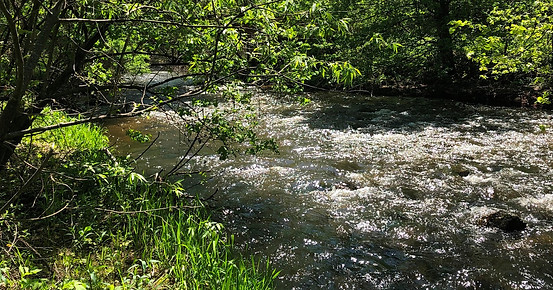
CHLORIDE
Chloride is a water quality pollutant of increasing concern in Scott County.
In the winter, chloride in the form of rock salt or brine is used to deice sidewalks, roads, and driveways. When the snow melts in the spring, all the salt that was put down is carried into local waterbodies. Salt is also entering our waterbodies from the discharge of in-home water softener systems. All this salt is becoming a problem as it only takes 1 teaspoon of salt to permanently pollute five gallons of water. Once salt dissolves in water, it is nearly impossible to remove.
Salt in lakes and streams are a problem for aquatic habitat because fresh water species cannot tolerate high levels of chloride and lake turnover is affected. Salt also makes its way into our drinking water supply.
Chloride pollution from winter salt is not just a future threat; it is already here in Scott County. Credit River, Raven Stream, and Sand Creek do not currently meet Minnesota Pollution Control Agency’s chloride water quality standard.

Credit River is among the three streams in Scott County that does not meet the water quality standard for chloride.
What Can You Do To Help?
Shovel first!
Shoveling is the best way to prevent salt pollution since it clears sidewalks and driveways without having to use any salt. Shovel right after a snow event for the best results.
Sprinkle, don't pour.
Large salt granules melt a few inches of ice, so sidewalk salt should be scattered about 2-3 inches apart. Additional salt just adds unnecessary pollution.
Sweep up extra salt.
If there are still salt granules on your sidewalk and driveway once the ice has melted and the sidewalk is dry, sweep up the salt! You can use it after the next storm, plus it won’t get washed into our waters.
Add salt at the right temperature.
Pure rock salt (sodium chloride) can only melt ice if the pavement is above 15 degrees Fahrenheit. At colder temperatures sand can be used for traction on the ice, or you can use de-icers that work at colder temperatures.
Wear appropriate winter footwear.
Don’t expect every sidewalk to be as clear and dry as it is in the summer. Put on those boots and be tolerant of safe amounts of snow on the sidewalk.
Install an efficient water softener.
High-efficient water softeners use less salt to soften water. Even if the water that does down your drain goes to a waste water treatment plant, the chloride does not get filtered out, so your softener salt stays in the water.









